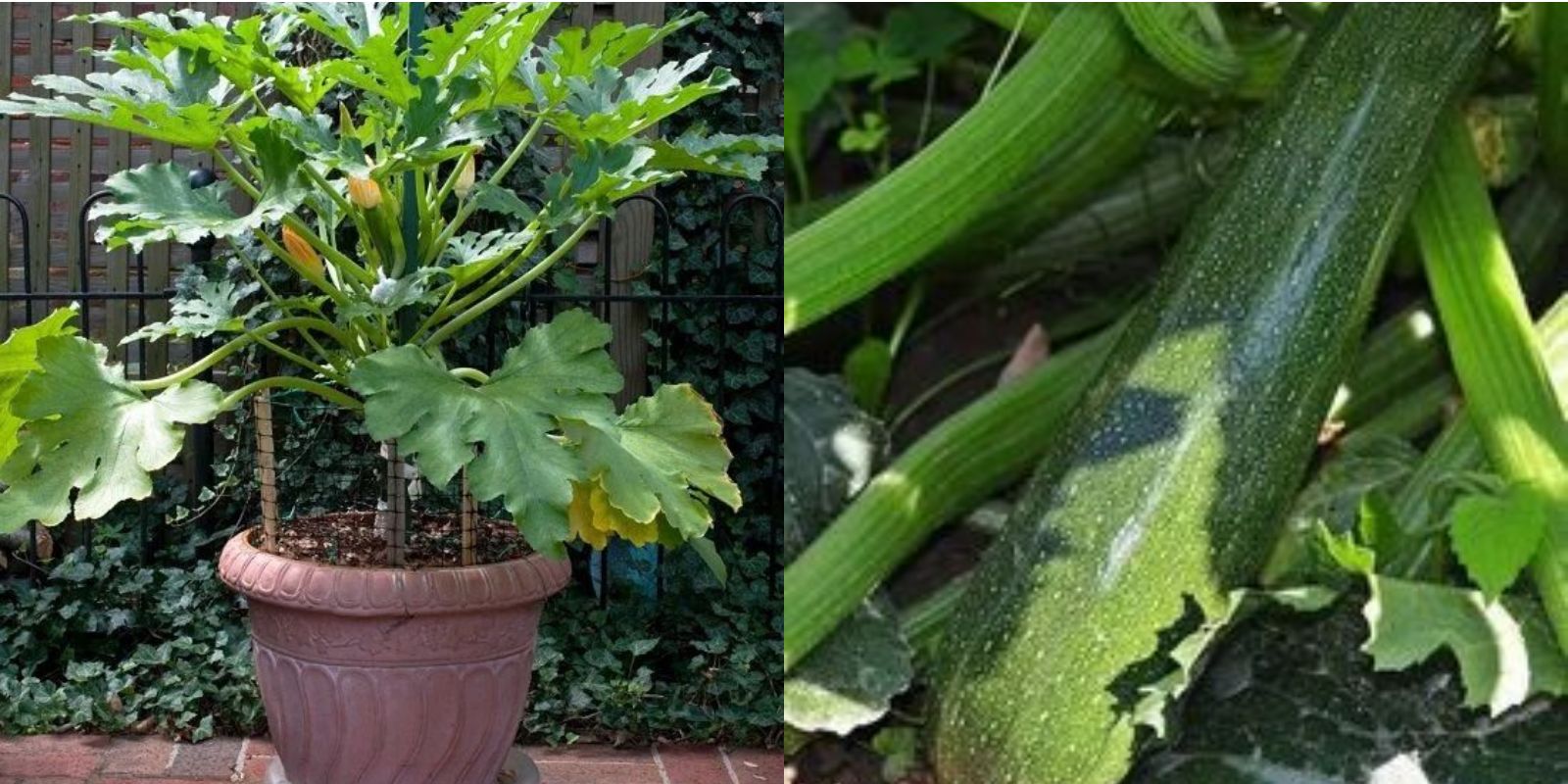Growing zucchini in pots is an excellent solution for those with limited gardening space or who wish to cultivate fresh vegetables in an urban setting. This approach is particularly suited for balconies, patios, or small yards. Zucchini is a versatile and productive vegetable that thrives in containers with the right care. In this comprehensive guide, we will walk you through six essential steps to successfully grow zucchini in pots, ensuring a bountiful harvest.
Introduction
Zucchini (Cucurbita pepo) is a member of the squash family and is known for its prolific production and delicious flavor. Whether you’re a seasoned gardener or a beginner, growing zucchini in pots allows you to enjoy this nutritious vegetable without needing a large garden. With proper planning and care, you can achieve a productive and thriving container garden.
Step 1: Choose the Right Pot
Selecting the right pot is crucial for the successful growth of zucchini. The size and type of container will directly impact the plant’s health and yield.
- Size: Opt for a pot that is at least 12-18 inches deep and wide. Zucchini plants have extensive root systems that require ample space. A larger pot will accommodate the roots better and provide more stability.
- Material: Choose pots made of materials like plastic, ceramic, or metal. Ensure the pot has adequate drainage holes to prevent waterlogging, which can lead to root rot.
Step 2: Use Quality Soil
The quality of the soil is fundamental to the health of your zucchini plants. Zucchini requires well-draining, nutrient-rich soil to thrive.
- Potting Mix: Use a high-quality potting mix designed for vegetables. These mixes are typically lighter and more aerated than garden soil, which helps with drainage.
- Compost: Enrich the potting mix with compost. Compost adds essential nutrients, improves soil structure, and helps retain moisture. A mix of 70% potting soil and 30% compost is ideal.
Step 3: Plant the Seeds
Zucchini can be grown from seeds or seedlings. Directly sowing seeds into the pot or transplanting seedlings are both effective methods.
- Sowing Seeds: If starting from seeds, sow them directly into the pot after the last frost date. Plant 2-3 seeds per pot, spacing them about 1-2 inches apart. Once the seedlings emerge, thin them to the strongest plant.
- Transplanting Seedlings: Alternatively, you can start seeds indoors and transplant seedlings into the pot once they have 2-3 true leaves. Space seedlings 1-2 inches apart in the pot.
Step 4: Water Regularly
Consistent watering is essential for healthy zucchini plants. Zucchini requires regular moisture to grow properly.
- Watering Frequency: Water the pot thoroughly when the top inch of soil feels dry. Ensure that the soil remains consistently moist but not soggy. Overwatering can lead to root rot, while underwatering can cause the plants to become stressed.
- Watering Method: Water the plants at the base to avoid wetting the foliage, which can lead to fungal diseases. A drip irrigation system or watering can with a long spout is ideal for container gardening.
Step 5: Provide Adequate Sunlight
Zucchini plants thrive in full sunlight. Ensuring that your pot receives sufficient light is crucial for healthy growth and high yields.
- Sunlight Requirements: Place the pot in a location where it receives at least 6-8 hours of direct sunlight each day. This can be on a sunny balcony, patio, or near a south-facing window if growing indoors.
- Adjustments: If growing indoors, consider using grow lights to supplement natural light and ensure the plants receive the necessary light intensity.
Step 6: Fertilize and Support
Proper fertilization and support are key to maximizing zucchini production and maintaining plant health.
- Fertilization: Apply a balanced, water-soluble fertilizer every 3-4 weeks. Zucchini plants benefit from a mix of nitrogen, phosphorus, and potassium. Follow the manufacturer’s instructions for the correct dosage.
- Support: While zucchini plants typically do not need support, some varieties with larger fruits may benefit from staking or a trellis. This helps keep the fruit off the ground and reduces the risk of diseases.
Additional Tips for Success
Pest and Disease Management
Zucchini plants can be susceptible to pests such as squash bugs, aphids, and spider mites. Regularly inspect your plants for signs of pests or diseases.
- Pest Control: Use organic insecticidal soap or neem oil to manage pests. Hand-picking larger pests like squash bugs can also be effective.
- Disease Prevention: Avoid overhead watering to reduce the risk of fungal diseases. Remove any diseased or damaged leaves promptly.
Harvesting
Harvest zucchini when the fruits are young and tender for the best flavor and texture.
- Harvest Time: Zucchini can be harvested 2-3 times a week once they reach about 6-8 inches in length. Regular harvesting encourages the plant to produce more fruit.
- Harvest Method: Use a sharp knife or pruning shears to cut the zucchini from the plant, leaving a small portion of the stem attached.
Conclusion
Growing zucchini in pots is a practical and rewarding way to enjoy home-grown vegetables, even in limited spaces. By following these six essential steps—choosing the right pot, using quality soil, planting seeds or seedlings, watering regularly, providing adequate sunlight, and fertilizing and supporting your plants—you can achieve a successful and productive container garden.
Zucchini plants are relatively low-maintenance and offer abundant yields, making them an ideal choice for container gardening. Whether you’re an experienced gardener or just starting out, growing zucchini in pots allows you to savor fresh, nutritious vegetables right from your own home. Start your container gardening adventure today and watch your zucchini thrive! 🌿

